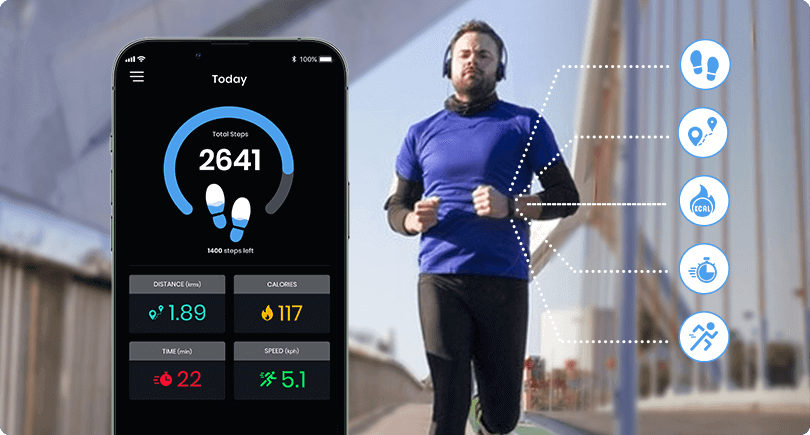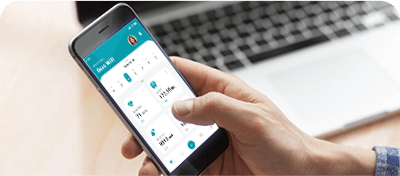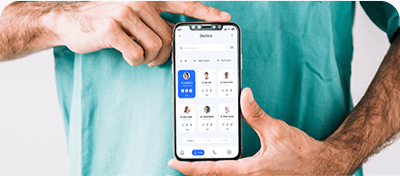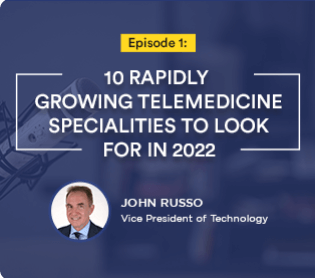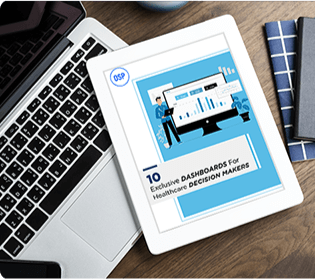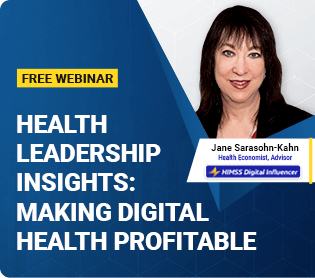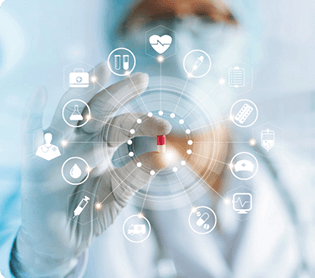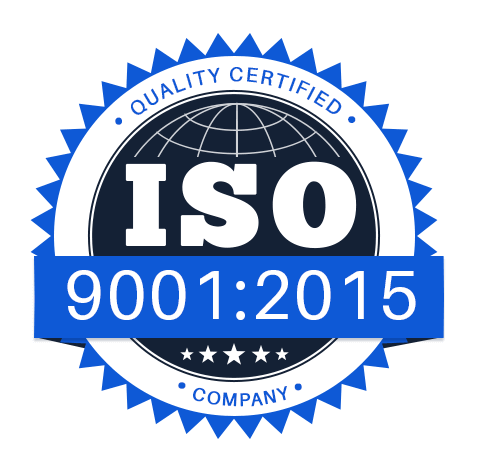Contents
Healthcare software product development has a big role in today’s clinical scenario. Loopholes and gaps in the current healthcare settings call upon technological advancements like EHR, electronic data interchange, telemedicine, and remote patient monitoring.
Healthcare organizations aiming to minimize expenses and boost patient outcomes are keen on adopting telemedicine and RPM. While telemedicine makes care easily accessible, RPM offers much more. RPM solutions are truly effective, from closely monitoring vitals to smoothly transitioning the traditional care model to a value-based model. Besides, patients (consumers) using RPM devices can directly share critical data with healthcare facilities or physicians. Even healthcare providers utilize RPM solutions to gain meaningful, actionable insights to ensure better care outcomes. And for physicians/professionals, the RPM system has dashboards, a graphical user interface used for viewing the overall metrics.
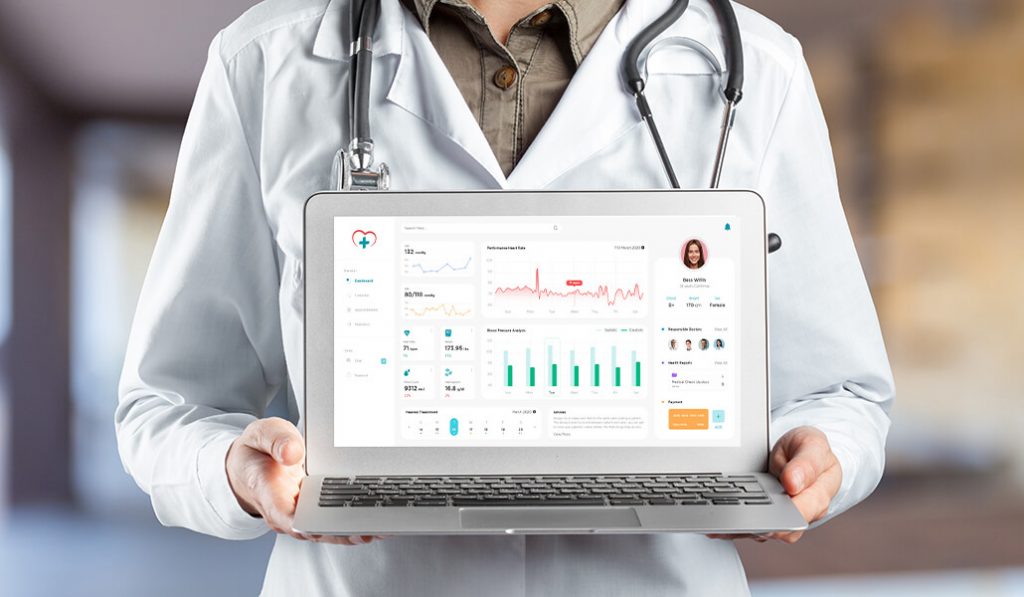
For healthcare professionals, keeping track of every patient’s vital data manually isn’t possible. An RPM dashboard helps providers in this, as it allows them to view critical metrics and draw meaningful insights from them. A good and user-friendly patient monitoring dashboard saves time and money and even helps providers improve their care quality.
How is a Remote Patient Monitoring Dashboard Built?
At OSP, we have developed various custom healthcare software solutions, including physician-patient monitoring dashboards. Interestingly, these physician-patient monitoring dashboards depend greatly on the users’ needs. That means a health monitoring system caters to different requirements within the care continuum. Take, for example, patient experience analysis, hospital/healthcare management, weight management, clinical trial management, post-surgery monitoring dashboards, etc. Perhaps, that’s why developing a remote health monitoring system is a multi-faceted process.
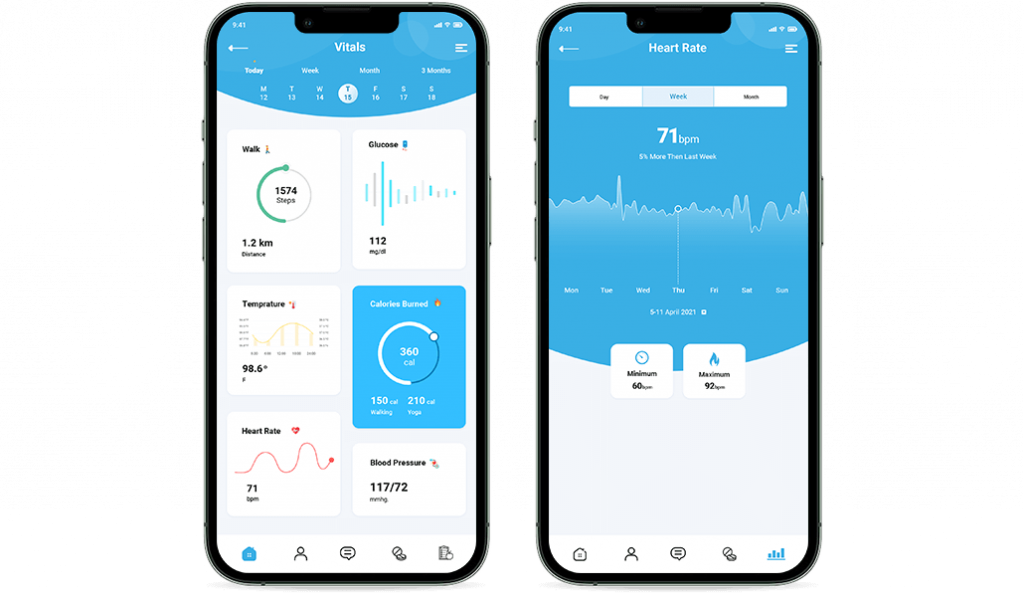
Although RPM dashboards track progress and monitor patient trends, these dashboards differ in functionality and visual representation per the users’ requirements. A custom patient monitoring dashboard includes crucial metrics and data in one seamless interface. We’ve designed a few RPM dashboards that cater to the different needs of providers. From post-surgical ones to weight management dashboards, our remote patient monitoring solutions are quite efficient in providing actionable insights to clinicians. And with those insights, providers can make the right clinical decisions for patients.
Types of Remote Patient Monitoring Dashboard
Designing a patient monitoring system is not an easy task, especially a user-friendly dashboard. Every professional within a healthcare setting requires data to ensure better patient health. And a specific remote patient monitoring dashboard makes it easier for them. Here are the significant types of patient monitoring dashboards that OSP has worked on-
Dashboard for Admins
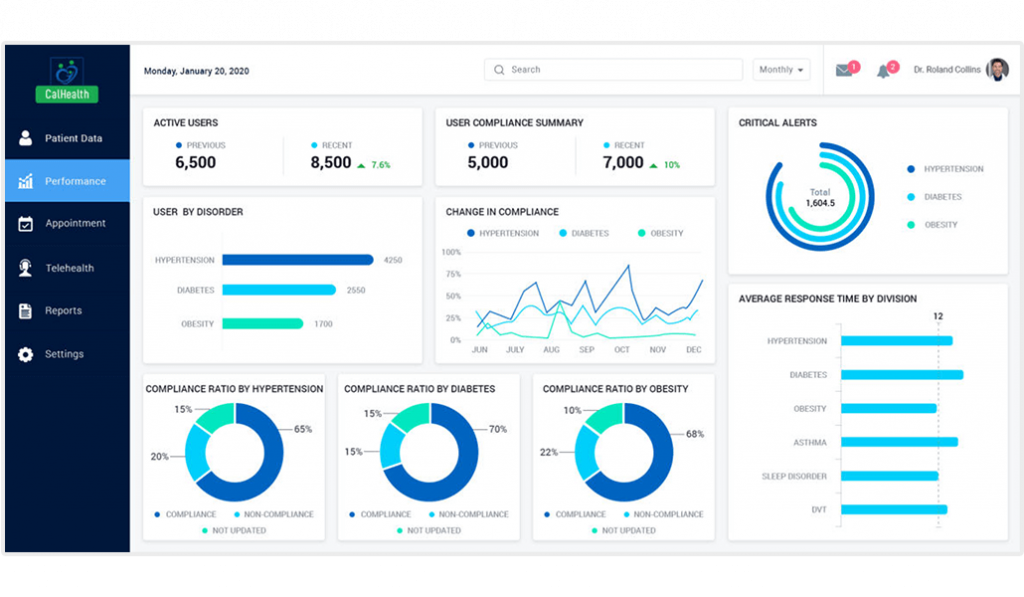
Admins or administrators have some major tasks related to patient vitals. There is no debate that RPM dashboards for admins are more like a dashboard for internal data management as admins are responsible for curating comprehensive monthly reports based on patients’ vital data for healthcare organizations. Not just that, admins also keep track of physicians and their consultations. So, developing a patient monitoring system and dashboard completely depends on the admins’ needs.
Interestingly, the admins’ dashboard of our remote patient monitoring platform primarily collated the patients’ vitals collected from their RPM (wearables) devices. This data collected from patients’ RPM devices help admins and physicians to make the right clinical decisions. Besides, our dashboard for admins is insightful and easy to follow, which minimizes the workload. The dashboard also makes it easier for admins to analyze the trends and other patient conditions changes. Besides, the dashboard shows the active users grouped as per their conditions. Further, these users are sub-grouped based on compliance. Our RPM dashboard has much to offer, as it details the number of compliant users, trends per condition, monthly alerts, and average response time.
Post-Surgery Dashboards For Physicians
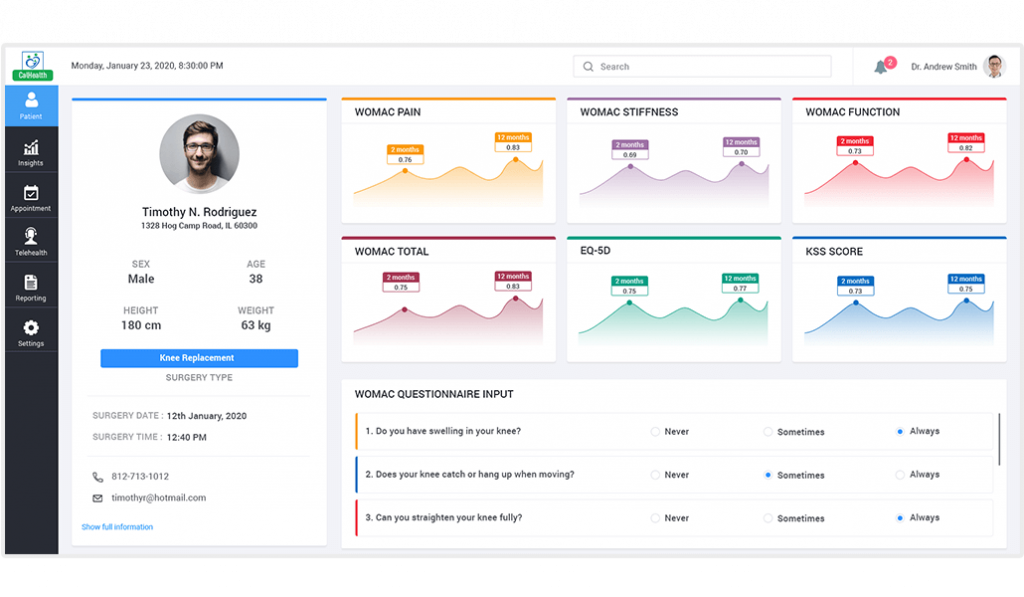
Post-surgery monitoring is quite crucial today. Several physicians and healthcare leaders have emphasized the importance of post-surgical patient monitoring systems. Such a patient monitoring solution help clinicians keep track of the ups and downs in their conditions and reduce the chances of re-hospitalizations. And for that, a robust and efficient post-surgery dashboard for physicians is the best.
At OSP, we worked on a post-surgery dashboard for physicians to help them understand the pain level and other complications that could turn fatal at any time. Our dashboard highlights some critical parameters of patients undergoing major surgeries like knee replacement, and it uses the WOMAC score to inform clinicians about pain, stiffness, and other issues. These parameters help physicians to understand patients’ conditions and enable them to take measures to avoid serious complications.
DVT Device Analytics Dashboards
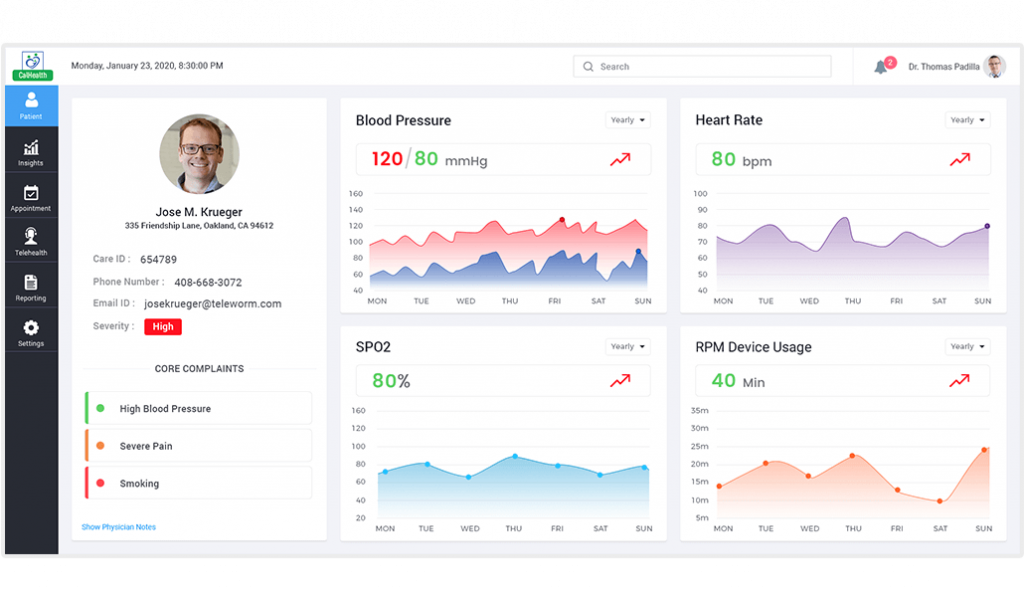
DVT, or Deep Vein Thrombosis, is one of the major reasons for death among Americans. Healthcare leaders have often pointed out that DVT and other cardiac conditions require consistent monitoring and management. Today, with advanced telehealth solutions and remote health monitoring systems, practitioners find it easy to keep track of patients with DVT and other cardiac conditions. Statistics reveal that every year nearly 60,000-100,000 Americans die from DVT. Since it’s preventable if detected timely, RPM devices come in handy in these cases.
We worked around this to prevent, monitor, and manage DVT cases and developed a user-friendly remote patient monitoring dashboard for DVT device analytics. Our DVT dashboard connects to the patient’s RPM device, and this connection with the RPM device allows practitioners to view critical data such as heart rate, blood pressure, SpO2, and device usage. While the patient can access their daily, weekly, and monthly readings, practitioners can use these readings to understand the patient’s state. This dashboard is undoubtedly an effective part of the health monitoring system.
Weight Management Dashboards
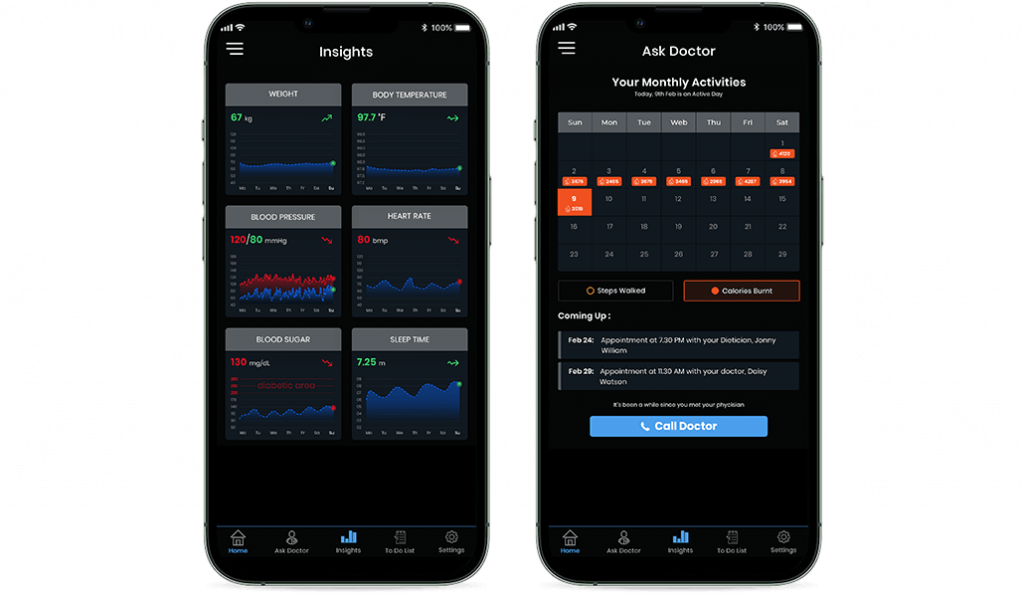
Along with several other RPM dashboards, weight management dashboards are quite popular. Patients and care providers are quite concerned about the consequences of obesity, and it’s because with obesity comes other critical diseases like type 2 diabetes, stroke, heart problems, and many others. So, health and wellness experts often suggest remote weight monitoring to ensure people avoid such critical diseases. Remote monitoring devices help in weight monitoring, and data from these RPM devices reflect on practitioners’ dashboards.
We’ve also created a weight management dashboard to boost remote patient monitoring. Our dashboard includes a pedometer, a to-do list, consistent patient vitals monitoring, and on-call doctors. With these features, providers can easily track patients’ day-to-day progress and boost their weight loss outcomes.
RPM Alerts
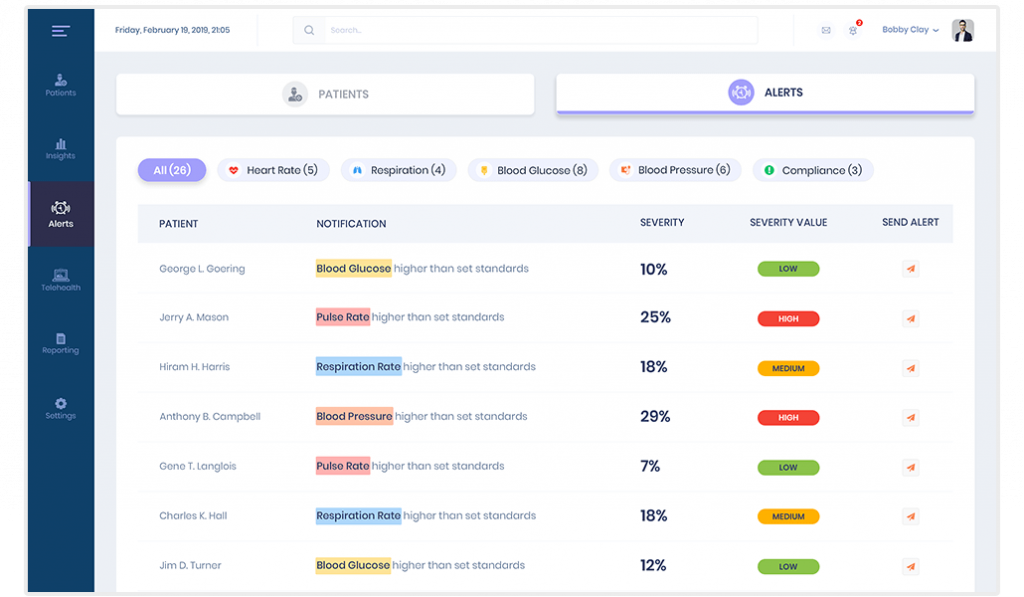
Healthcare professionals must deal with daily data to make critical decisions and ensure proper care delivery. Assessing and analyzing these data manually is outdated. However, with the RPM alerts dashboard, providers can keep track of patients conveniently. Such a dashboard provides them with snippets of patients’ data that practitioners can use to plan their tasks.
We developed an RPM Alerts dashboard to make it easier for caregivers to notify patients. The dashboard offers a severity score for each patient and notifications. It also allows providers to alert patients or hospitals, especially in serious cases. Overall, RPM alerts dashboard is quite a must-have in every remote patient monitoring software.
Conclusion
Remote patient monitoring solutions are the need of the hour, just like any other integrated healthcare solutions. As healthcare professionals race against all odds to ensure value-based care, remote patient monitoring guarantees fruitful results. And as custom healthcare solution developers, RPM dashboards can truly make a difference if they can cater to healthcare professionals’ needs. From convenience to saving money, these RPM dashboards can improve the quality of care across the health ecosystem.
OSP is a trusted software development company that delivers bespoke solutions as per your business needs. Connect with us to hire the best talents in the industry to build enterprise-grade software.
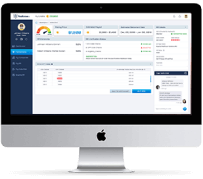
How can we help?
Fill out the short form below or call us at (888) 846-5382
Looking for software solutions to build your product?
Let's discuss your software solutions for your product in our free development acceleration call!
Get In Touch arrow_forwardDiscuss Your Project Handover with a team of expert Book a free consultation arrow_forward
About Author

Written by Riken Shah linkedin
Riken's work motto is to help healthcare providers use technological advancements to make healthcare easily accessible to all stakeholders, from providers to patients. Under his leadership and guidance, OSP Labs has successfully developed over 600 customized software solutions for 200+ healthcare clients across continents.







